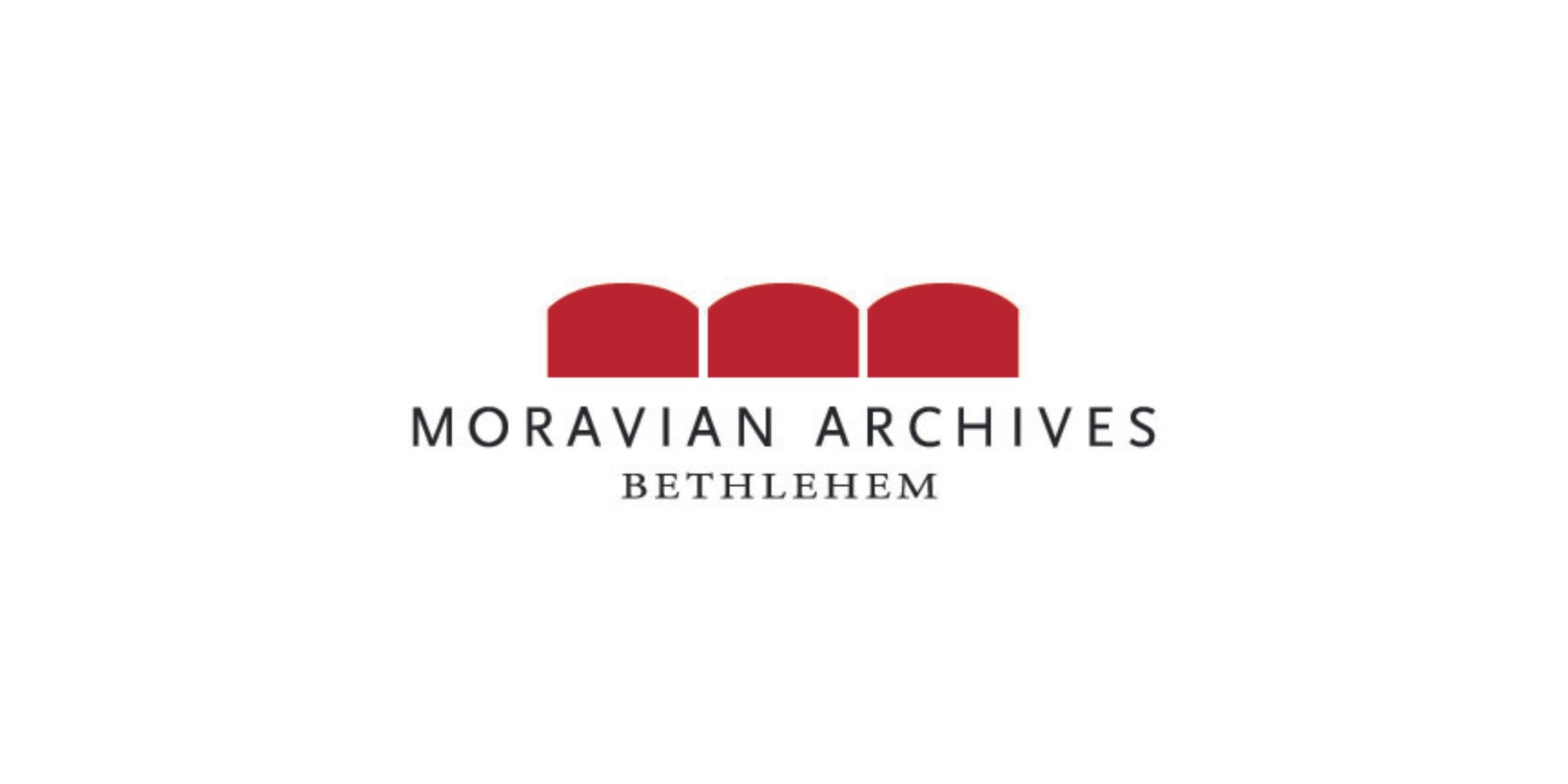
The Moravian Archives dates back to the 1740s

Use of the Moravian Archives
In the 18th century, the archives stored mostly recent records and material that was still used. During the nineteenth century, the archives became seen as a repository of historical papers, documenting events in the past. Individual people began using the archives for historical research. These were mostly ministers and trustworthy members of the Moravian Church. In the twentieth century, the historical profession in the United States became professionalized. Some historians discovered the richness of the Moravian Archives. Especially after World War II, the archives became accessible to historians and to the general public.
Today, in the 21st century, we focus on providing the most comprehensive access to our holdings, by cataloging and indexing our collections, research assistance, and digitization
Archival Collections on the Move
While the Archives has always been in Bethlehem, the location of the collections has changed over three centuries.
- 18th Century -
During the 18th century, one of the rooms in the Gemeinhaus was designated to store the records of the Bethlehem congregation. For many years, the archives were stored in a room in the attic on the east end of the Gemeinhaus.
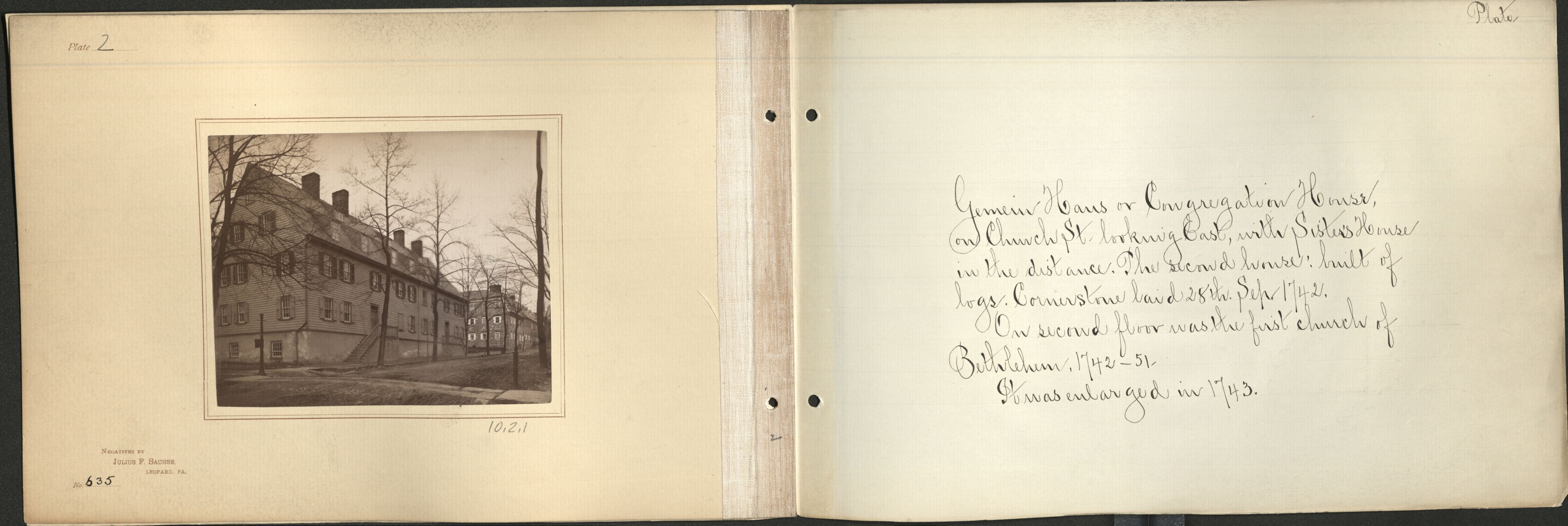
- 19th Century -
In 1819, the archives together with the congregational library were moved to the Old Chapel, that was no longer used for worship.

In 1827, the archives were moved into the church building: first into one of the downstairs rooms on the east side and around 1860 into the Kleiner Saal, the chapel on the second floor. The archives would remain in the Kleiner Saal for the following seventy years.


- 20th Century -
In 1930, the archives was moved into a new building on the corner of Main Street and Elizabeth Avenue on the campus of Moravian College.



In 1977, the archives moved once again into its current facility on West Locust Street.



Finding aids at the Moravian Archives
Archivists create so-called “finding aids” to provide accessible inventories to record groups and manuscript collections. Today, these lists help users locate items as they are preserved in the vault of the Moravian Archives.
The first inventory of the Moravian Archives was compiled in February 1757 by Moravian Bishop Matthaeus Gottfried Hehl

Inventory of the Bethlehem Archives, housed in the Gemeinhaus
Some of the original categories of organization in this classification scheme included:
1. Full series in good order (Bethlehem, Gnadenhütten, Nazareth, Wachau [Wachovia])
2. Membership applications
3. Minutes of various committees
4. Gemeinnachrichten aus Europa (Congregational Accounts [newsletters] from Europe)
5. Travel diaries, worldwide
6. Minutes of European synods
7. Minutes of Pennsylvania synods
8. “Things that are uniquely what they are, and are what their titles say…”
9. “Things that still need to be revised, discarded, arranged, continued…”
10. “Things pertaining to work in North America…”
11. Congregational diaries from country congregations in North America
12. English writings and translated copies of Gemeinnachrichten (Congregational Accounts)
13. Documents pertaining to education and work among children
14. Documents pertaining to Nazareth, Pennsylvania
15. “Things that need revision…”
16. “Several small batches of documents…”
17. Church registers
18. Catalogs
19. Materials organized by location in white cabinets: Allemængel, Berbice, Friedrichstown, Germantown, Gnadenhütten, Gnadenthal, Heidelberg, Jerseys, Lancaster, Maguntsche (Emmaus), Manakosy [Maryland], Mennissing, Muddy Creek and Mühlbach, Nazareth, New York, Oley, Philadelphia, Quittapahilla (Lebanon) and Swatara (Bethel), St. Thomas, Donegal (Mount Joy), Tulpehocken, Warwick (Lititz), and Bethlehem.
Want to learn more about the history of the Moravian Archives?
The "Moravian Archives History Tour" is a five-part series that weaves through time and throughout the city of Bethlehem, showcasing how the Archives has evolved and grown.

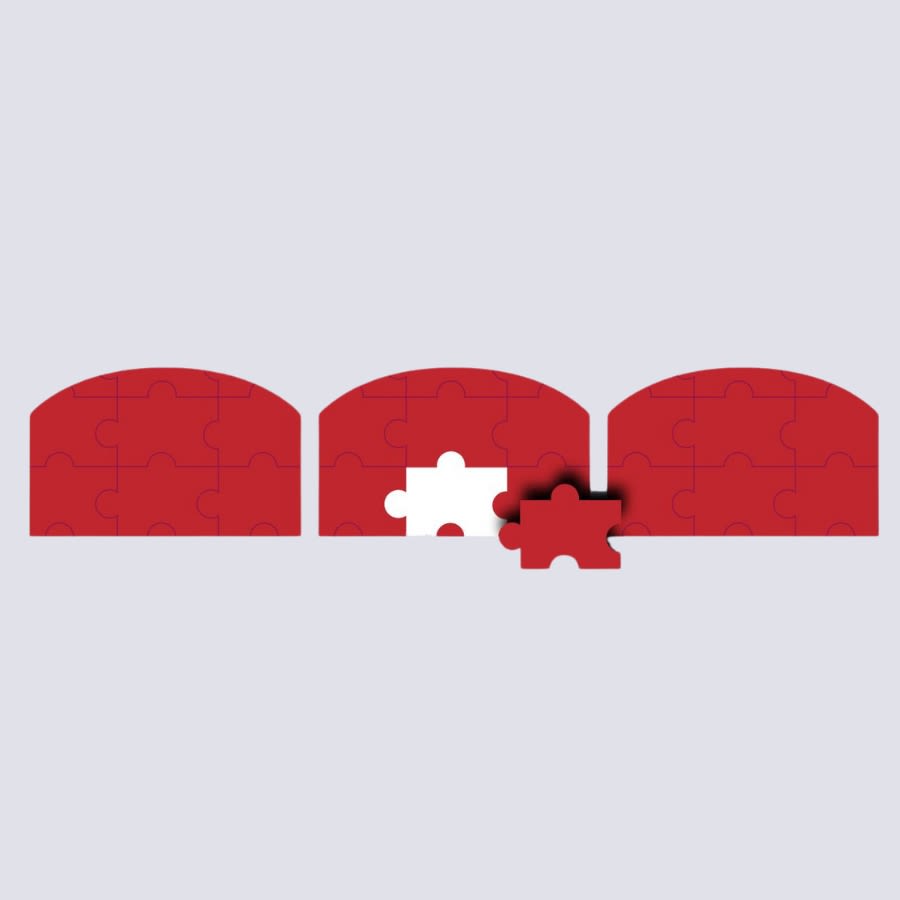
The Moravian Archives Bethlehem aims to collect and preserve records and historical materials of Moravians in North America and make them available to the public.
We achieve this goal by acquiring many types of materials, including paintings, photographs, maps, written materials, ephemera, and published works.
Bear in mind that only some items have enduring value, and archivists don't keep every record that comes their way. Instead, archivists select records to add to a collection based on understanding the historical context in which materials were created, their intended uses, their relationships to other sources, and how they fulfill the archives' mission. If an item(s) meets our predetermined criteria, it will be added to the collection.
Conscious decisions and thoughtful questions help archivists determine if a new item should be added to the collection. At the Archives, we may pose these questions when considering adding a new item to our collection:
Does this item fit our mission?

Portraits of Ismaiah and George Burnet
Ismaiah Thomas came to America to serve in the household of William Burnet, the governor of New York. In New York, Ismaiah met George, the steward and butler of the governor, and later married him in 1722.

These paintings of Ismaiah and George were likely produced for the couple by Johann Valentin Haidt when he briefly served as the interim pastor of the New York congregation in May and June of 1757. Unlike the traditional, subdued dress that one might expect of most eighteenth-century Moravians, the Burnets are depicted in clothing that displays their wealth and social standing.
This acquisition thus fulfills our goal of adding items that enhance our understanding of Moravian daily life and customs.
Does this item fill a gap that presently exists in our collection?

Ledger of cooper Charles F. Kremser
Charles Frederick Kremser (1798-1879) lived in Bethlehem and made a living as a cooper, a tradesperson who makes or repairs wooden barrels, casks, and tubs. The Moravian Archives purchased Kremser’s business ledger from an antiquarian book dealer in 2019.

While the Archives already held many business records in its collection, the bulk of these records directly relate to businesses or trades operated by the Moravian Church.

Acquiring Kremser’s ledger allows researchers to learn more about how a member of the Moravian Church independently carried out a trade in a Moravian community (in this case Bethlehem).
Does this item or collection add depth to our holdings?
The Kilbuck Papers
John Henry Kilbuck (1861–1922) and his wife Edith Romig Kilbuck (1865–1933) served the Moravian Church as missionaries in southwestern Alaska in the late 19th and early 20th century. John and Edith established the first Moravian mission station in Alaska named Bethel.


Many records exist within the Moravian Archives which document the missionary service of the Kilbucks and their time as Missionaries in Alaska. John and Edith Kilbuck kept extensive diaries written to each other, their children, and other family members during there time as missionaries.

Unlike the missionary records of the Kilbucks, these diaries record commentary of a much more personal nature and provide a unique perspective of missionary service that is not maintained in other collections
Informed by our history and structured by our goals, archivists now have the foundation to take part in the physical activities that make up the archival process. These activities include:

Acquiring Records

Arrangement and Description of Records

Sustaining Records
There are three typical ways in which items are brought into the Moravian Archives for safekeeping. Items are received by way of donation, transfer, and purchase. Each time a unit of materials arrives in the Archives at any given point in time, it is referred to as an acquisition.

A donation occurs when a person or entity voluntarily gives archival resources to the Archives without compensation.

A transfer is a required movement of records, no longer in current use, from a Moravian board, agency, or congregation.

A purchase occurs when the Archives provides compensation in order to acquire archival resources.
When the Archives begins a process of documenting an acquisition and its presence in the archives’ building, it becomes what is known by archivists as an accession. Accession records help to keep track acquisitions over the years and through staff changes.
Lets take a look at the ways that recent acquisitions made their way into our collection
Donation: South Africa Papers
The South Africa Papers were donated to the Moravian Archives by Norbert Hartig, a retired educator, librarian, and film producer from British Columbia in 2016. The records came into Hartig’s possession when he worked at a media center in Natal, South Africa.
The materials donated by Hartig include a medical recipe book of Leopold Richard Baur, trained apothecary and Moravian missionary in South Africa; the official diary of the Moravian mission at Mvenyane; and a typewritten auto-biography of Theophil Ernst van Calker, President of the Provincial Board of the South Africa Eastern Province

Transfer: Records of the Moravian Church of Downey, California
Moravians in the Los Angeles area began worshiping in July of 1950 in various locations due to the lack of a formal Moravian Church. It was not until September of 1952 that a Moravian pastor, Rev. Mervin C. Weidner was officially called to move to the West Coast and establish a Moravian Church in Downey, California. The Moravian Church of Downey held its first service in February of 1954 and continued to serve the community of Downey and the Greater Los Angeles Area for the next 63 years until its last service on June 4, 2017 after which the congregation permanently closed.
Over time the Moravian Archives received the records of Downey Moravian Church through multiple transfers of records (1957, 2011, 2013, 2017). These records document the day to day life of the congregation and its members.
Included in the transfers were copies of "Light from the Belfry" the official newsletter of the congregation which began in 1967.
Due to the multiple transfers received, a full series of "Light from the Belfry" is preserved at the Archives

Purchase: View of a River
Gustav Grunewald, born in the Moravian community of Gnadau in 1805, was trained at the Dresden Art Academy. Together with his wife, Maria Justina Lehmann, he came to Bethlehem in 1831 where he worked as a painter and taught at the Moravian Seminary for Young Ladies. He returned to Germany in 1867. He died in the Moravian community of Gnadenberg in 1878.
This painting by Grunewald was previously owned by the Bethlehem Area Public Library. Because the library could not properly care for the painting and it did not fit their mission, it was decided it would be sold to the Moravian Archives.
In 2021, the Moravian Archives purchased the painting and added it to our growing collection of artwork by Grunewald
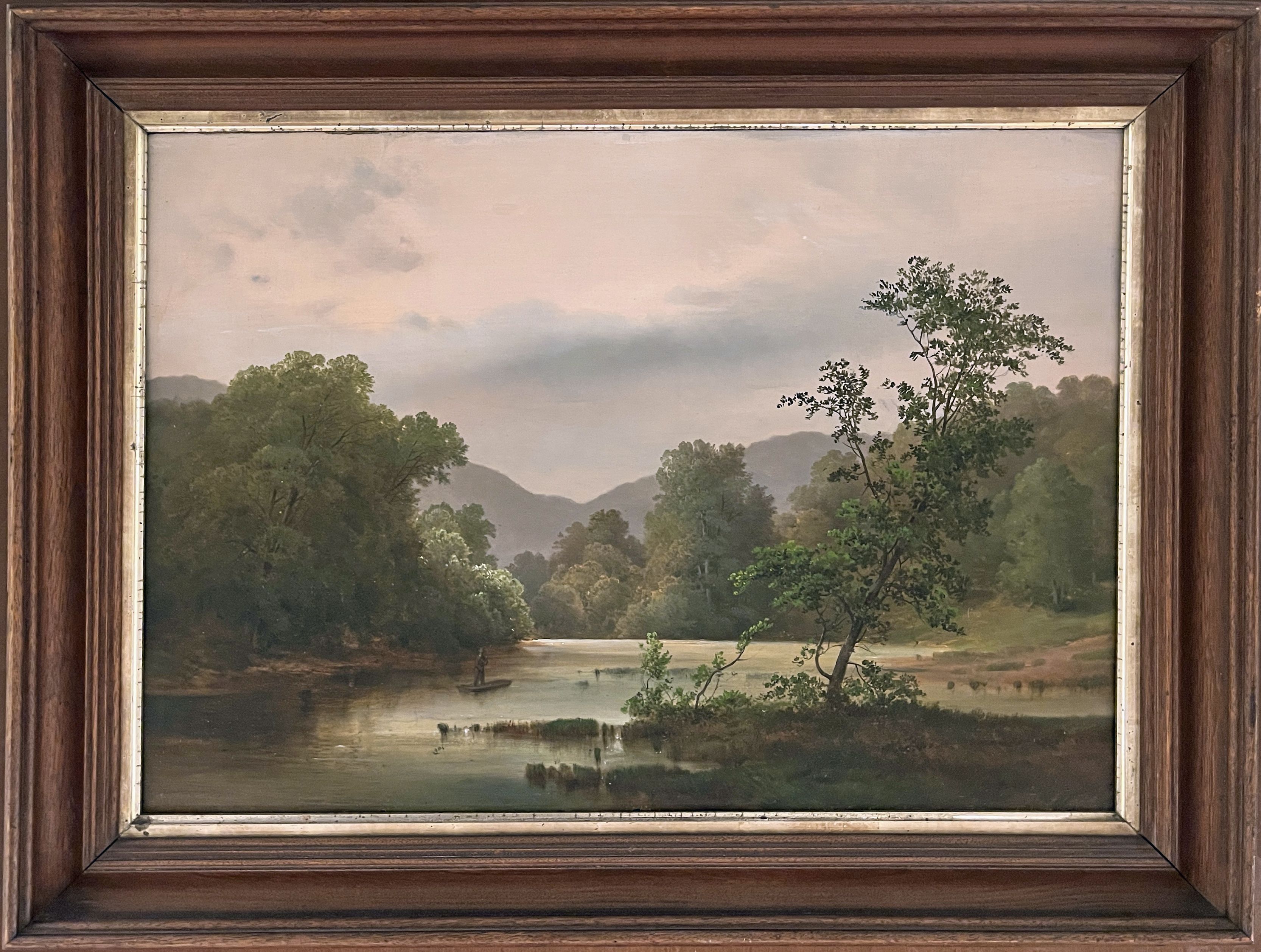
After an item has been acquired and accessioned by the Moravian Archives, the next steps in the archival process consist of two related components, arrangement and description.
Arrangement
What is arrangement?
During arrangement, an MAB archivist will survey a collection to assess what types of records it holds and how these records relate to each other. From there, the archivist decides on an organizational strategy that will allow these materials to be effectively accessed by researchers.
How do archivists accomplish arrangement?
The archivist aims to arrange the materials in the manner in which they were received, preserving the original order of the record creator(s). If the archivist cannot find a discernable order, arrangement of the materials will be based upon a hierarchical system, providing a logical structure built upon the content and/or functionality of the materials themselves.
Arrangement of the William Doster personal papers
William Emil Doster (1837-1919) was born in Bethlehem and served as a Union Army general in the Civil War as well as practiced law in Pennsylvania and Washington, D.C. Following Abraham Lincoln’s assassination in 1865, Doster was appointed the legal defense council for assassination conspirators George Atzerodt and Lewis Payne.
Doster's papers were acquired from Doster descendants over a period of time including an accessions from Dorothy Ferguson in 2004 and 2012, Helen Woodbridge in 2012 and a donation by Alice Rimkus in 2018.
These papers have gone through several rounds of arrangement. Lets check it out!
As it stands now, the collection has been arranged into four series or categories: "Personal Records," "Business Records," "Civil War," and "Photographs."
Of these series, two have been further arranged into subseries. Subseries are essentially additional categories that serve to provide further structure to the arrangement of the materials.
Each of these subseries serves to further define Doster's personal records.
As you will see, the Personal Records series includes eight subseries.
Meanwhile, the Business Records series has been divided into four subseries.
Notice that some of the subseries in each series are alike/similar. While the same headings are utilized, it is important to note that these subseries will contain different materials from each other.
For example, the "Drawings" subseries in the "Personal Records" series will likely be of a more casual nature and may deal with personal matters or interest. Meanwhile, the "Drawings and Prints" subseries in the "Business Records" series will probably contain materials that are more formal in tone and front-facing.
By utilizing the capacity and flexibility of arrangement, archivists have the ability to provide a collection with more structure and nuance, ultimately enhancing access and understandability for researchers.
Description
What is description?
While arrangement concerns the physical organization of a collection, description uses language to provide details about the records.
How do archivists accomplish description?
To accomplish description, the archivist may create a title for the record as well as a written statement that more fully represents what the record conveys. Archivists often use controlled vocabulary during description to represent names, landmarks/locations, or types of materials. This links a record to related records, allowing a researcher to easily access similar records, enhancing the potential of their research.
Description helps to answer questions such as who created the record, what the components of the record are, and where, when, and why the record was created, providing nuance and context.
Describing the Scrapbook of Hill-to-Hill Bridge Construction in Bethlehem, PA

In 1924 the Hill-to-Hill Bridge in Bethlehem opened to traffic, creating a sustainable connection between the north and south sides of the city.

Replacing the older, wooden Lehigh Valley Covered Bridge, the Hill-to-Hill Bridge’s modern architectural elements and elegant design made it a key component of Bethlehem’s evolution and growth.
This scrapbook, acquired via donation by Margaret M. Shelly in 2021, contains collected newspaper clippings that effectively document the Hill-to-Hill Bridge’s planning and building phases as well as the varied opinion of city residents regarding the bridge’s construction.
When creating a record for this scrapbook, an archivist would likely choose to utilize controlled vocabulary that describes the bridge from technical and scientific standpoints to ensure that this record was accessible to those with both broad and specific research queries.

Arrangement and description is often structured and influenced by the foundational archival principals of provenance and original order.
Provenance
The principle of provenance directs the archivist to determine who created a record or set of records. The principle of provenance instructs the archivist to keep records of different origins separate to preserve their context.

Original Order
The principle of original order directs the archivist to retain records in the same order in which they were created. Much like the principle of provenance, this principle helps to preserve the context as well as the integrity of the records.
After records are acquired, arranged, and described, the third step of the archival process concerns preserving the materials we hold.
As described in our mission statement, the Archives is responsible for the preservation of the records we hold, ensuring that they will be available far into the future.
This work can be loosely divided into the following categories: deaccessioning, passive preservation, active preservation.

Deacessioning
Not every item that enters the Archives is ultimately added to the collection. Instead newly acquired items are surveyed and if it is determined that some do not fit within our collection scope as laid out in our mission statement or are beyond our resources to properly maintain they are not accessioned. Such items may be returned to the previous holder or transferred to another institution that is better suited to preserving and providing access to them. This process can also be applied to collections accessioned in the past, which is referred to by archivists as deaccessioning.
Instructions for making Rock Cloth
These three handwritten pages describe the process for making a flexible material that looks like a stone surface that can be used in Easter and Nativity displays. This involves soaking muslin cloth in a dyed glue solution, painting it, and after it has dried crumpling and folding it to form the appearance of slopes or rocks.




These instructions were part of the papers of William Laidman, which were donated to the Archives in 2016 by his estate. During the initial survey we identified several items that did not fit our collection scope.
The items that were deaccessioned were a Moravian costume and dolls which were then transferred to the Moravian Historical Society, while these papers and other items were added into our collection.

Passive Preservation
Passive Preservation refers to the task of ensuring that all materials in the collection are stored in a manner that protects them from damage and decay. Perhaps the most obvious aspect of this is the Archives’ climate-controlled vault, but it also includes transferring items to acid-free folders and boxes, placing blueprints and drawings in Mylar sleeves, and transferring digital material to more stable and accessible storage media.

Digitization as Passive Preservation
Digitization commonly consists of scanning or photographing items in order to create digital surrogates. This is an invaluable tool for preservation as researchers are often able to work with surrogate images while originals remains safely stored. It is also beneficial for access as people throughout the world can work with items online rather than having to travel to the Archives.
Digitization has also become an increasingly important aspect of passive preservation.
Nainip Tittulautingit - Nain Brass Band
This CD is a recording of Nainip Tittualutingit, or the Nain Brass Band. Produced by Mark David Turner and Tom Gordon, and recorded in the Great Hall of Queen’s College (St. John’s, NL), this album was donated by Mark David Turner in 2017. It features a musical tradition of Moravian Labrador Inuit brass music that spans two centuries, giving both sound and dimension to thousands of printed and handwritten manuscript materials from Labrador preserved here in the Archives.


An important question for any archives is how long different types of media can be stored and their content accessed.
This is especially important with electronic media due to the great variety of file types, storage media, playback devices, and software that have been introduced in our lifetimes. CDs such as this one have a projected lifespan of anywhere from 20 to 100+ years, the wide range being a result of differences in the materials and manufacturing processes.
Consequently, current best practices is to transfer the content of the CD to a different carrier, such as servers, which must then be monitored and periodically upgraded.
Listen to "Tradition and Transition" performed by the Nain Brass Band!
Register of Lititz Moravian Church, vol. 4
From both active and inactive congregations, the Archives preserves registers of baptisms, confirmations, marriages, funerals, and other official acts. This register was transferred to the Archives from Lititz Moravian Church in 2016.
The register has been digitized to enhance its long-term preservation and access, helping to limit physical handling while also creating a new copy of the record in the form of image files.

Further enhancing access to such registers, volunteers generously devote their time and effort as part of the “Moravian Roots” project. The 1862 baptism of John Martin Beck, seen here, was indexed by volunteer Kay Gilbreath and later reviewed by volunteer Lora L. Perry, making the entry accessible in both its original handwritten form and in the Moravian Roots database.

Active Preservation
On occasion an item in our collection is found to have suffered damage over the years and needs to be repaired, referred to in archives and related fields as active preservation. This damage can result from improper storage in the past or simply from the materials aging.
In these situations we will evaluate the condition of the item, and if it is determined that repairs are appropriate, we will work with other individuals and institutions with the relevant expertise.
Nativity of Christ
This painting by Moravian artist and pastor Johann Valentin Haidt (1700-1780) was purchased by the Moravian Archives at auction in 2020, with the generous support of David Scott Parker. Interestingly, the auction listing did not mention Haidt or Moravians, but a reference to the biblical “Bethlehem” in the listing brought it to the attention of Archives staff who recognized the style.
This nativity scene is unsigned but attributed to Haidt due to it’s similarity to his other works. It is the only surviving biblical painting by the artist before he came to North America.
When the Archives acquired this painting it was in poor condition, with damage to the canvas, flaking paint, and discoloration all evident.
It has since been restored by Steven Erisoty, a professional conservator who has worked with the Moravian Archives several times before, so that its original beauty can be appreciated for generations to come.
Accessing our records
After we acquire, arrange and describe, and sustain records, these materials reach a pivotal milestone - they are now accessible to researchers!

Open and equitable access to records for all researchers is the final piece of the archival process.
Interested in gaining access to our records?
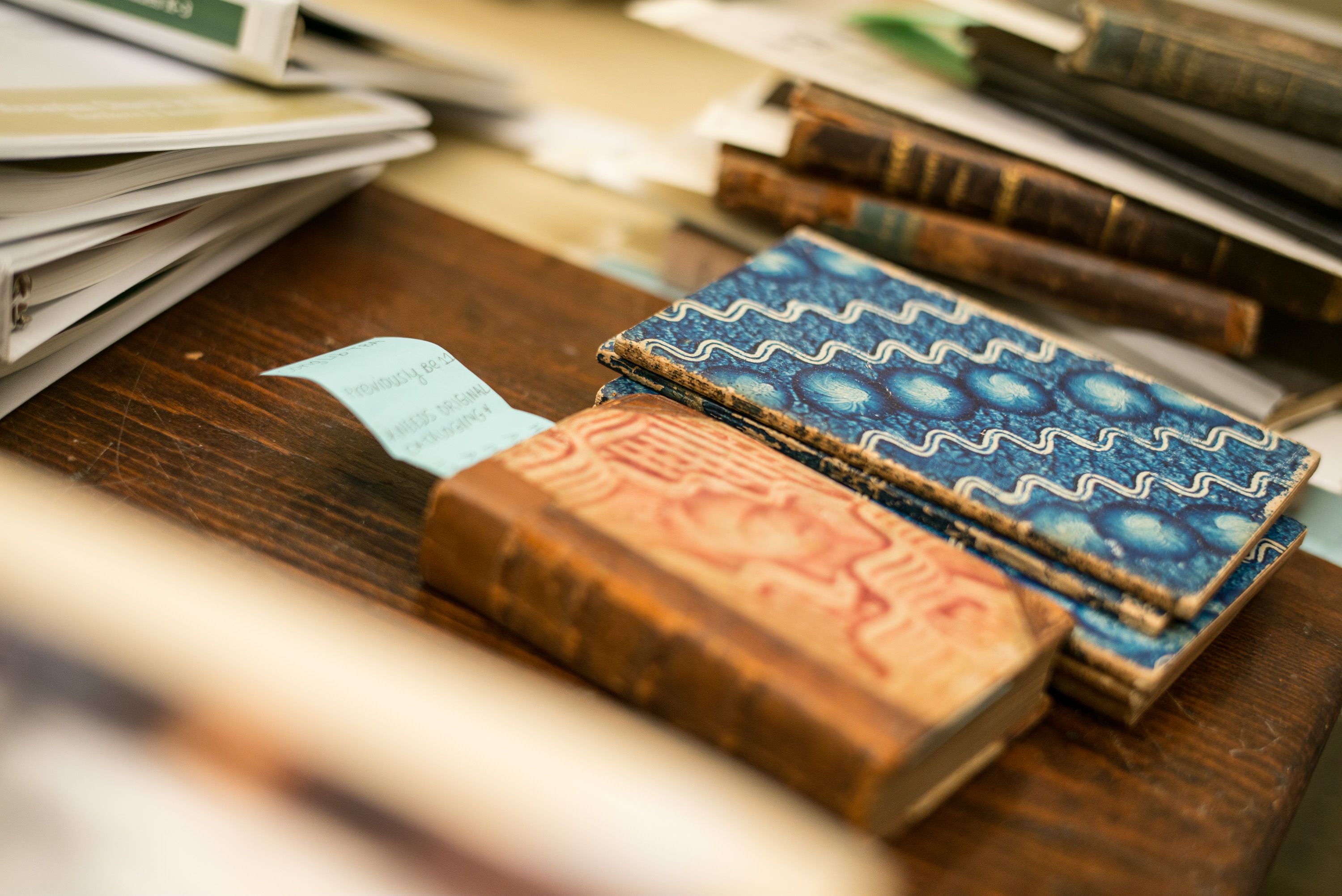
At the Moravian Archives, access to records can be achieved through physical and digital means.
Researchers can visit our reading room in person, or access our online finding aids.
Learn more about research at the Moravian Archives here or watch our two-part video series designed to help researchers search and order records!

This Exhibit would not be possible without the generous support of the Friends of the Archives.
Contributions made by the Friends of the Archives enable us to collect, preserve, and maintain the rich history of the Moravian Church Northern Province and create exhibits like this one.
Thank you!
Exhibition Citations

View of the Gemeinhaus from the southside of Church Street
20th century
Rufus A. Grider (artist)
12.7 cm H x 20.3 cm W
DP f.197.25, Moravian Archives Bethlehem, PA.

Color perspective drawing of the Moravian Archives in Bethlehem, Pennsylvania
1976
architectural drawing
48.3 cm H x 76.2 cm W
DP f.119.5, Moravian Archives, Bethlehem, PA.

"A View of Bethlehem, one of the Brethren's Principal Settlements in Pensylvania"
1757
engraving
Nicholas Garrison (artist); J. Noual (engraver)
37.3 cm H x 46.8 cm W
DP f.256.2, Moravian Archives, Bethlehem, PA.

"Gemein Haus or Congregation House, on Church St., looking east..."
early 20th century
photographic print in photographic album
Julius F. Sachse (creator)
9.5 cm H x 11.6 cm W
PhotAlbums 10.2.1, Moravian Archives, Bethlehem, PA.

"The Chapel, erected in 1751-2, and rear view of Gemeinhaus"
early 20th century
photographic print in photographic album
Julius F. Sachse (creator)
9.5 cm H x 11.6 cm W
PhotAlbums 10.13.1, Moravian Archives, Bethlehem, PA.

"Archive Room in Church"
early 20th century
photographic print in photographic album
Julius F. Sachse (creator)
9.5 cm H x 11.6 cm W
PhotAlbums 10.12.1, Moravian Archives, Bethlehem, PA.

"Paintings and portraits in the Archive Room..."
early 20th century
photographic print in photographic album
Julius F. Sachse (creator)
9.5 cm H x 11.6 cm W
PhotAlbums 10.10.1, Moravian Archives, Bethlehem, PA.

Interior of Moravian Church Archives in Colonial Hall
n.d.
photographic copy
10.8 cm H x 14 cm W
PhotColl PA 929, Moravian Archives, Bethlehem, PA.

Exterior of Colonial Hall
ca. 1930
photographic print
20.32 cm H x 25.4 cm W
PhotColl PA 970, Moravian Archives, Bethlehem, PA.

Interior of Moravian Church Archives in Colonial Hall
n.d.
photographic copy
10.8 cm H x 14 cm W
PhotColl PA 930, Moravian Archives, Bethlehem, PA.

Inventory of the Bethlehem Archives, housed in the Gemeinhaus
1757
Ink on paper
BethCong 536, Moravian Archives, Bethlehem, PA.

Portrait of Ismaiah Burnet
ca. 1757
Oil on canvas
Johann Valentin Haidt (painter)
117 cm H x 77 cm W
PC 117, Moravian Archives, Bethlehem, PA.
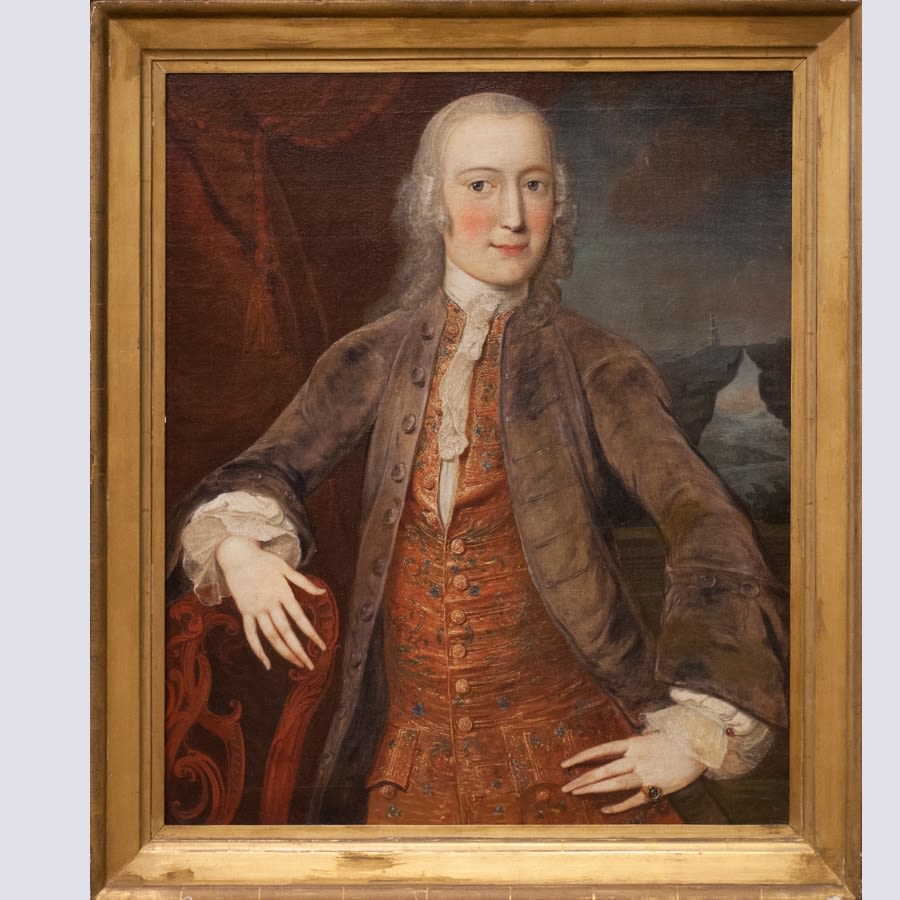
Portrait of George Burnet
ca. 1757
Oil on canvas
Johann Valentin Haidt (painter)
117 cm H x 77 cm W
PC 118, Moravian Archives, Bethlehem, PA.

Loose page from ledger of cooper Charles F. Kremser
1838-1870
Bound volume; pen on paper
KCF Cooper, Moravian Archives, Bethlehem, PA.

Loose page from ledger of cooper Charles F. Kremser
1838-1870
Bound volume; pen on paper
KCF Cooper, Moravian Archives, Bethlehem, PA.
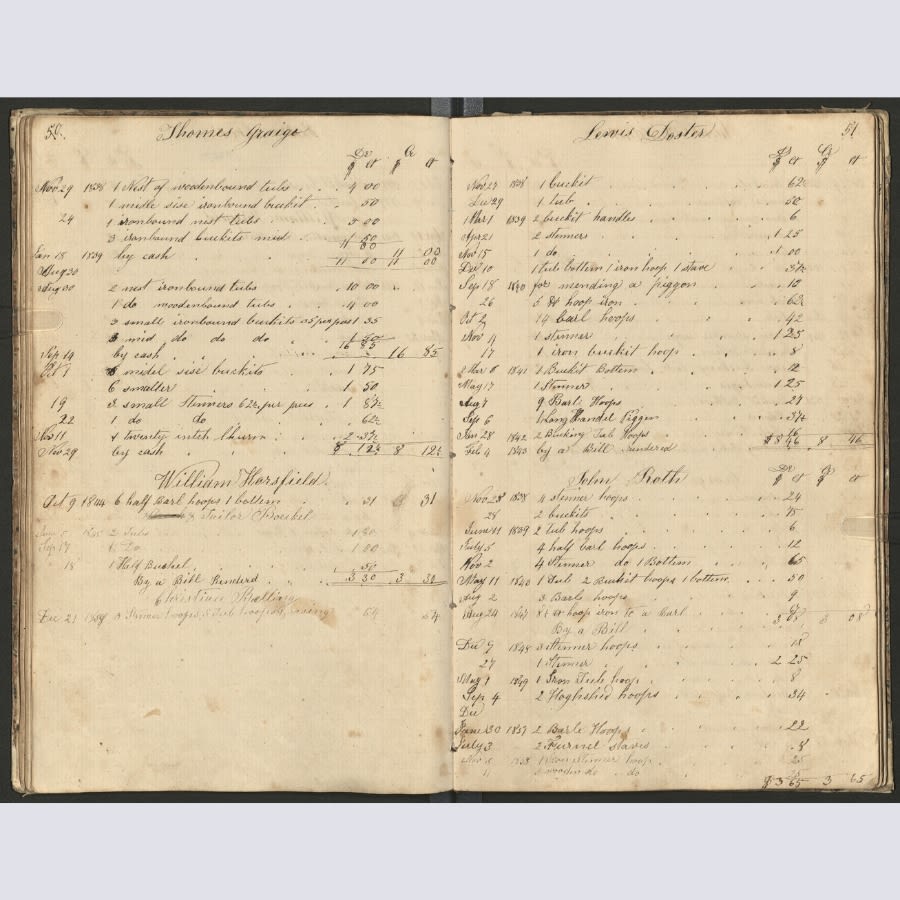
Ledger of cooper Charles F. Kremser
1838-1870
Bound volume; pen on paper
32 cm x 20 cm x 2 cm
KCF Cooper, Moravian Archives, Bethlehem, PA.

"John H. Kilbuck and Edith Romig Kilbuck"
1900 - 1920
matted photographic print
Martin, Ottawa, Kansas (creator)
20.32 cm H x 15.24 cm W
PhotPortraits K.060, Moravian Archives, Bethlehem, PA.

Kilbuck Papers
1883-1927
2.09 Linear Feet
PP Kilbuck, Moravian Archives, Bethlehem, PA.

Kilbuck Papers
1883-1927
2.09 Linear Feet
PP Kilbuck, Moravian Archives, Bethlehem, PA.

South Africa Papers
1844-1929
.3 Linear Feet
SAfr, Moravian Archives Bethlehem, PA.

"Light from the Belfry" from the records of the Moravian Church of Downey, California
1949-2017
Various medium
7.09 Linear Feet
MC Downey, Moravian Archives Bethlehem, PA.

"View of a River"
1865
Oil on canvas
Gustav Grunewald (painter)
42.2 cm H x 60.5 cm W
PC 137, Moravian Archives, Bethlehem, PA.

Bird's eye view of parade on Hill to Hill Bridge, Bethlehem, Pennsylvania
ca. 1920s
photographic print
22.9 cm H x 40.6 cm W
PhotOVR 0234, Moravian Archives, Bethlehem, PA.

"Lehigh River Bridge- Bethlehem, PA"
n.d.
photographic print
13.3 cm H x 19.1 cm W
PhotColl PA 603, Moravian Archives, Bethlehem, PA.
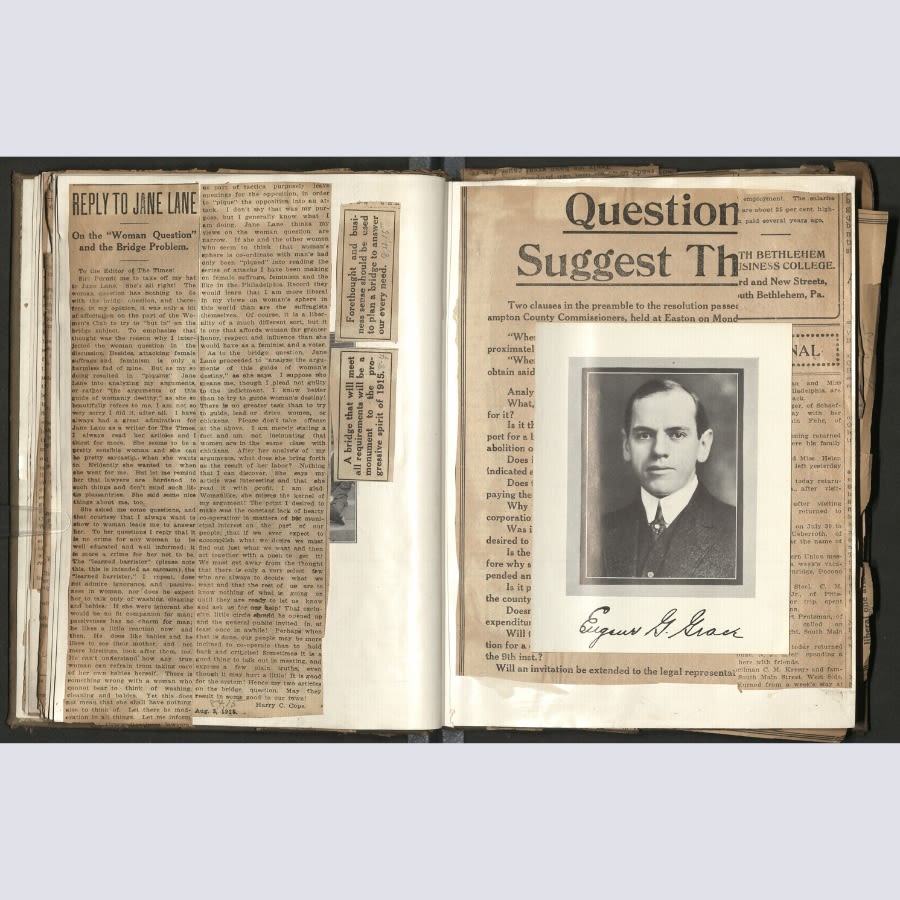
Scrapbook of Hill-to-Hill Bridge Construction in Bethlehem, PA
1915
1 bound volume containing 30 pages
SB 02, Moravian Archives, Bethlehem, PA.

Instructions for Making Rock Cloth
ca. 1990
3 pages; pencil on paper
28 cm H x 19 cm W
VarMSColl 33, Moravian Archives, Bethlehem, PA.

Putz at the home of Richmond Elmore Myers
1920
Gustave Conradi (photographer)
19.1 cm H x 24.1 cm W
PhotOVR 0228, Moravian Archives, Bethlehem, PA.

Nainip Tittulautingit - Nain Brass Band
2016
Compact Disc
RecColl 1, Moravian Archives, Bethlehem, PA.

"Brass Band at Nain"
ca. 1903 - 1910
Lantern Slide
Moravian Illustrated Lecture Bureau (creator)
10.2 cm H x 8.3 cm W
PhotLabrador 0054, Moravian Archives, Bethlehem, PA.

Register of Lititz Moravian Church, vol. 4
1859-1869
1 bound volume; pen on paper
35 cm H x 22 cm W x 3.3 cm D
ChReg 248, Moravian Archives, Bethlehem, PA.

Nativity of Christ
ca. 1750
Oil on Canvas
Johann Valentin Haidt (painter)
95.5 cm H x 107.5 cm W
PC 135, Moravian Archives, Bethlehem, PA.

Photograph by J Taylor Design, 2018

Photograph by J Taylor Design, 2018

Photograph by J Taylor Design, 2018

Photograph by J Taylor Design, 2018

Photograph by J Taylor Design, 2018

Photograph by J Taylor Design, 2018
